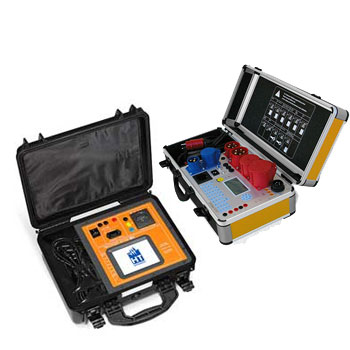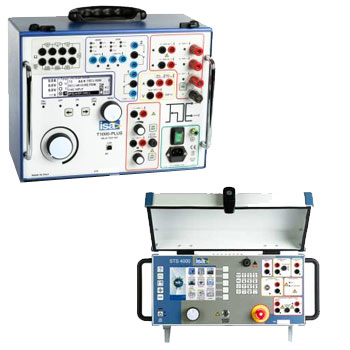
Diaphragm Seals (Chemical Seals) – Safe Measurement with Hot, Viscous & Aggressive Media
Diaphragm seals decouple the measuring instrument from the process medium. A flexible diaphragm and a suitable fill fluid transmit pressure to a gauge, transmitter, or switch—ideal for high temperatures, viscous/crystallizing media, solids content, strong corrosion, or in hygienic applications.
ICS Schneider Messtechnik supplies flush, inline, and clamp solutions with Tri-Clamp/Varivent®, flange, threaded connections, and capillary remote systems. We support selection of diaphragm material, fill fluid, process connection, temperature management, and calibration/cleaning concepts (CIP/SIP) – including factory or DAkkS calibration.
FAQ on Diaphragm Seals
Answers on designs, media compatibility, fill fluids, temperature behavior, hygiene, installation, calibration, and maintenance.
When do I need a diaphragm seal?
When the medium is hot, corrosive, viscous, tends to crystallize, or requires hygienic isolation. The seal protects the instrument and ensures a stable, cleanable measuring point.
What designs are available?
| Design | Typical connections | Use |
|---|---|---|
| Flush (front-flush) | Tri-Clamp, Varivent®, DIN/ASME flange | Hygienic, pasty/particle-laden media |
| Inline | Weld-in/Clamp inline | Flow-through, CIP/SIP without dead space |
| Threaded | G/NPT, special threads | General process industry |
| Capillary/remote | Any (via capillary) | Decouple from vibration/heat |
How do I choose the diaphragm material?
316L for many media; Hastelloy® C, Monel®, Tantalum, or PTFE/EMA linings for highly corrosive media. Base the choice on medium, temperature, pH, chlorides, and cleaning method.
Which fill fluid is suitable?
| Fill fluid | Temp. range (typ.) | Notes |
|---|---|---|
| Silicone oil | -40…+200 °C | All-round, low viscosity |
| Synthetic oil | -20…+250 °C | Higher thermal stability |
| Medical/food-grade oil | -10…+200 °C | NSF/H1, FDA compliant |
| High-temperature fluid | up to +400 °C (design-dependent) | For extreme processes |
| Glycerin/water | 0…+150 °C | Hygienic, limited upper temp. |
Does a diaphragm seal affect measurement accuracy?
Yes—via additional volume, fill fluid properties, and temperature coefficients. High-quality, low-volume systems and suitable fluids minimize transfer error.
What temperature limits must be observed?
Defined by diaphragm material, fill fluid, and process connection. For very hot media use cooling elements, capillaries, or remote mount designs.
Is a flush connection mandatory for pasty media?
Recommended. Flush or inline seals prevent dead space and buildup, simplify CIP/SIP, and ensure fast response.
How does capillary length influence behavior?
Longer capillaries increase fill volume, potentially adding lag and temperature influence. Keep as short as possible and protect against vibration.
Which process connections are common?
- Tri-Clamp/Varivent® for food/pharma
- DIN/ASME flanges for chemical/general use
- G/NPT threads for standard applications
Can I retrofit existing instruments?
Yes. Gauges, transmitters, and switches can be coupled via adapters or direct mounts; verify calibration/scaling after assembly.
How do I clean hygienic measuring points?
Use CIP/SIP, flush diaphragms, and suitable seals (EPDM, FFKM). Consider surface roughness and EHEDG/FDA-compliant materials.
What about vibration?
Vibration can stress capillaries and the diaphragm. Use remote mounts with proper fixing, vibration dampers, and short, protected routing.
How is a system with diaphragm seal calibrated?
Calibrate as a complete system (seal + instrument) because transfer characteristics are system-dependent. Distribute test points across the working range.
Can pressure spikes be damped?
Yes—via snubbers/orifices, appropriate fill fluid, or capillary-coupled designs. Consider the impact on response time.
Which gaskets should I use?
Match to media and cleaning: EPDM, FKM, PTFE, FFKM. For hygiene, use smooth, low-dead-space concepts.
How do systems behave under vacuum/overpressure?
Diaphragms have allowable over/under-pressure limits. For vacuum, consider support structures; avoid or limit overpressure spikes.
What are typical root causes of issues?
- Wrong fill fluid: viscosity/temperature mismatch
- Excessive capillary length: sluggish response
- Unsuitable materials: corrosion or seal swelling
How do I document the measuring point?
Record device ID, diaphragm material, fill fluid, connection, capillary length, temperature limits, and calibration status (certificate no./date).
Do you provide sizing & selection support?
Yes. We analyze medium/temperature/cleaning, recommend design/material/fill fluid, size capillaries/cooling elements, and supply calibrated complete systems.













































































































































































